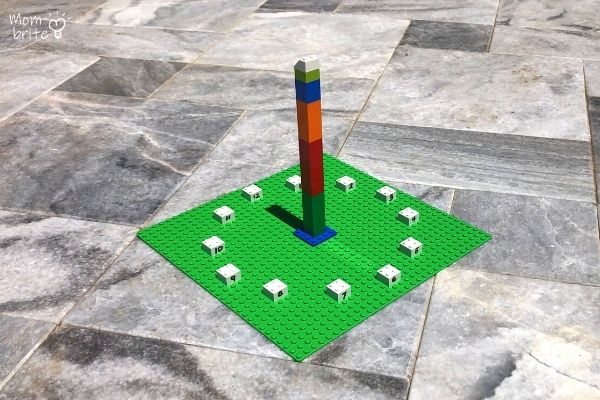 Kids are usually impressed by the idea that we can tell time using the sun, and making a sundial is a great summer activity that doesn’t have to involve being outside for too long (though it helps if you can go out and check it every hour for a few hours to see the difference as time goes on).
Kids are usually impressed by the idea that we can tell time using the sun, and making a sundial is a great summer activity that doesn’t have to involve being outside for too long (though it helps if you can go out and check it every hour for a few hours to see the difference as time goes on).
There are some really simple ways to make sundials, such as with a paper plate and a straw (Ontario Science Centre), using a printable clock face (Paging Supermom) or using a cardboard tube (Learn Play Imagine). I like that this one adds the engineering aspect of building the sundial out of Legos.
If you have multiple kids each one can make their own sundial and compare the lengths of the shadows they make at different times of day. They could also place them in different spots where there is more or less sun to illustrate that your sundial needs to be in the sun for you to be able to read it.
You can get all the details on how to build and mark the time on your Lego sundial from MomBrite. And if you want to turn it into a full-on science lesson, you can explain why a sundial works with a little help from Britannica Kids:
The surface of a sundial has markings for each hour of daylight. As the Sun moves across the sky, another part of the sundial casts a shadow on these markings. The position of the shadow shows what time it is.
The post also notes that ancient Egyptians, Greeks and Muslims all used sundials to tell time. And a fun fact for the word nerds: the part of the sun dials that sticks up is called a gnomon. I didn’t know that!
[Photo: MomBrite]
Review: The Lego Christmas Ornaments Book
How to Build a Lego Night Light
Lego Building Ideas and Challenges for Summer
 One way to
One way to
Leave a Reply